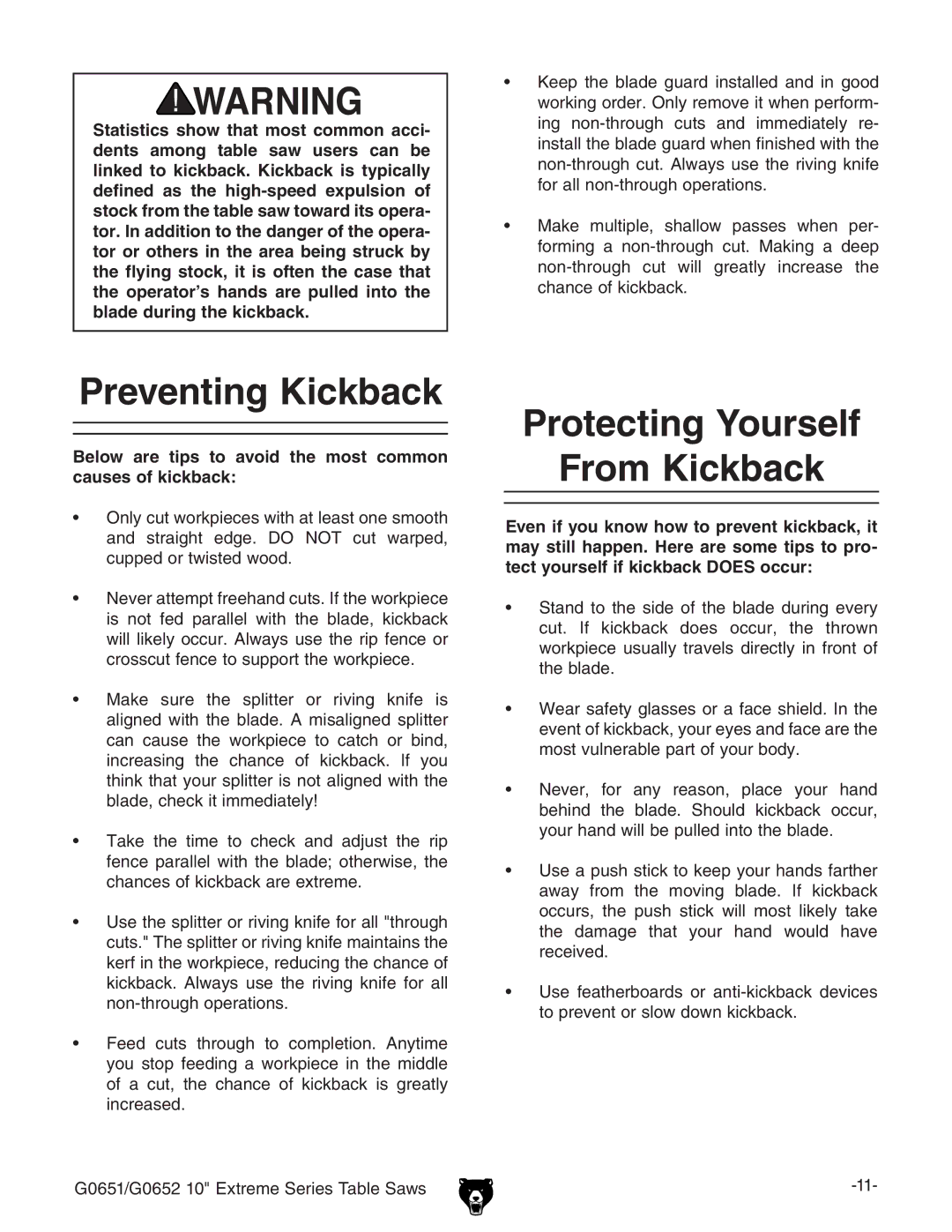
Statistics show that most common acci- dents among table saw users can be linked to kickback. Kickback is typically defined as the
•Keep the blade guard installed and in good working order. Only remove it when perform- ing
•Make multiple, shallow passes when per- forming a
Preventing Kickback
Below are tips to avoid the most common causes of kickback:
•Only cut workpieces with at least one smooth and straight edge. DO NOT cut warped, cupped or twisted wood.
•Never attempt freehand cuts. If the workpiece is not fed parallel with the blade, kickback will likely occur. Always use the rip fence or crosscut fence to support the workpiece.
•Make sure the splitter or riving knife is aligned with the blade. A misaligned splitter can cause the workpiece to catch or bind, increasing the chance of kickback. If you think that your splitter is not aligned with the blade, check it immediately!
•Take the time to check and adjust the rip fence parallel with the blade; otherwise, the chances of kickback are extreme.
•Use the splitter or riving knife for all "through cuts." The splitter or riving knife maintains the kerf in the workpiece, reducing the chance of kickback. Always use the riving knife for all
•Feed cuts through to completion. Anytime you stop feeding a workpiece in the middle of a cut, the chance of kickback is greatly increased.
Protecting Yourself
From Kickback
Even if you know how to prevent kickback, it may still happen. Here are some tips to pro- tect yourself if kickback DOES occur:
•Stand to the side of the blade during every cut. If kickback does occur, the thrown workpiece usually travels directly in front of the blade.
•Wear safety glasses or a face shield. In the event of kickback, your eyes and face are the most vulnerable part of your body.
•Never, for any reason, place your hand behind the blade. Should kickback occur, your hand will be pulled into the blade.
•Use a push stick to keep your hands farther away from the moving blade. If kickback occurs, the push stick will most likely take the damage that your hand would have received.
•Use featherboards or
G0651/G0652 10" Extreme Series Table Saws |
